In order to know 'how' to rewire the brain to manage chronic pain, first we need to understand 'what' pain and neuroplasticity even are. Let’s take a closer look at their definitions and causations to begin with.
*Disclaimer: This post is sponsored by Pathways and is meant for educational purposes. All personal opinions within the article are my own. Whilst I have done by utmost to be meticulous in research, I am not a doctor, and nothing in this article should be substituted for medical advice. Please consult your own doctor before changing or adding any new treatment protocols. This post may also contain affiliate links. It will cost you nothing to click on them. I will get a small referral fee from purchases you make, which helps with the maintenance of this blog. Read our Privacy Policy page for more information. Thank you!
- Last Updated: 11 August 2025
Pin to Your Neuroplasticity & Chronic Pain Management Boards:

What is “Pain”, Exactly?
The word "pain" - such a broad term, yet I suppose effective for quick communication. As human beings, we all have experienced pain at some level, at some point in our lives.
Pain is truly a multidimensional experience, namely: "sensory-discriminative" (physical sensation of pain), "affective-motivational" (emotional response to pain) and "cognitive-evaluative" (thought processes related to pain) (Fang & Shao, 2017). Meaning to say that both the mind and body are involved when it comes to pain, whether as voluntary or involuntary responses.
Pain isn’t always bad and has its uses as a form of protective mechanism (National Institute of Neurological Disorders and Stroke [NINDS], 2025). The brain itself contains no pain receptors, and it is our body that sends danger signals to it as feedback. The brain then interprets and translates them into pain which we feel (Baron & Devor, 2022).
The Difference Between Acute Pain & Chronic Pain
At its most basic level, there are two patterns of pain - acute and chronic - where chronic pain is defined as anything that lasts for more than 3 months. There is also episodic pain, which may be irregular in duration and/or occurrence (NINDS, 2025).
Our brains dedicate about 5% of neurons in a particular area to process acute pain. Compare this to chronic pain, where the numbers are much higher at 15% to 25%, due to the constant firing that wires these neurons together (Kuner & Kuner, 2021).
The Different Sources of Pain
According to NINDS (2025), pain can mainly be classified into the following categories based on its source:
- Nociceptive (pain "from tissue damage and/or inflammation")
- Neuropathic (pain from nerve damage)
- Nociplastic (pain due to nervous system dysfunction)
Pain can also be of a psychosomatic nature, where physical pain and sensations are experienced, yet no clinical cause can be found. The current consensus is that such pain is triggered by a combination of "psychosocial and biological factors" (Allahverdi, 2020).
Pain of Any Kind is REAL and Hurts
In sum, each of us experience pain differently, but no matter the root cause, the pain felt is very real. Nothing in our bodies are standalone; our mental and physical health are bonded. Pain can lead to a drastic loss in a person’s quality of life.
A pain cycle also tends to build up over time if the pain does not go away. We then learn to fear this pain, or develop more problems that feed off it.
Pin to Your Pain Science & Awareness Boards:

What is Neuroplasticity?
Neuroplasticity is still a new-ish field in medicine, and more of an umbrella term used to describe adaptation and changes to the brain (Innocenti, 2022).
There are many different types of neuroplasticity categories, but we will focus on two main types for the sake of this post - functional and structural. Functional plasticity is the brain’s ability to move functions from a damaged area to other parts within it. Structural plasticity is the brain’s ability to change its physical structure by learning (Cherry, 2024; Innocenti, 2022).
This can be both a good and bad thing. These changes in the brain manifest through the formation of new connections between neurons. This can reinforce either negative or positive thought patterns, bad or good habits. It can also amplify pain, or dial it down.
A Bit More About the Brain, and What Neuroplasticity has Got to Do with It
The brain is made up of three main parts, namely: the cerebrum, cerebellum and brainstem.
The cerebrum "controls motor and sensory information, conscious and unconscious behaviors, feelings, intelligence, and memory" (Maldonado & Alsayouri, 2023). The cerebellum helps to coordinate fine motor skills, and also with certain cognitive functions such as attention and fear. The brainstem is the 'bridge' between the spinal cord and the cerebrum and cerebellum. It also controls autonomic functions such as breathing and heart rate (Cleveland Clinic, 2025; Johns Hopkins Medicine, 2025; Maldonado & Alsayouri, 2023).
Various Parts of the Brain & What They Do
We won't zoom into each part of the brain specifically, but some keywords in relation to this article are (Cleveland Clinic, 2025; Johns Hopkins Medicine, 2025; Maldonado & Alsayouri, 2023):
- Amygdala - Processes emotions, and triggers the fight or flight response.
- Hippocampus - Processes memories, learning and also spatial awareness.
- Frontal lobe - Primarily associated with decision-making functions, voluntary movement, language, speech production, personality and more.
- Parietal lobe - Aids with awareness of the environment through interpretation of visual, sound, motor, sensory and memory information. This includes pain and touch.
- Temporal lobe - Processes sensory information, and is associated with language, emotion and memory retrieval. The amygdala and hippocampus are housed here.
Grey matter is the mass of neuronal cells involved in processes such as memory, emotions and muscle control. White matter tracts are bundles of myelinated axons, which relay sensory information from the muscles and skin to the brain (Cleveland Clinic, 2023; Mercadante & Tadi, 2023). They are interdependent and form ‘pathways’ to the various compartments in our brains.
'Rewiring' Our Neuronal Pathways
These neuronal pathways ‘light up’ every time we think, feel, or do something. Over time, these pathways become stronger based on our thoughts and actions. We can work on improving the ‘stamina’ of these pathways, which helps to increase the speed of transmission between sensory input and brain output.
A good example of this can be seen in stroke patients, who often need to relearn how to do basic activities such as walking. This is usually done under the guidance of a physiotherapist, where they practice these motions on repeat over many sessions (Physiopedia, n.d.).
We can also work on decreasing negative input, or attempt to break the pain cycle, by consciously teaching our brains that the danger signals it receives are not 100% accurate.
A classic example of this can be seen in Allodynia, where even a light breeze can cause extreme pain to the sufferer (He & Kim, 2023). One of the coping methods used is ‘systematic/graded desensitisation’; this exposes the patient to the cause of the pain itself at a gradual pace, in an attempt to desensitise the sensation (Orthopaedic Hand Service, 2023).
Central Sensitisation & Its Relation with Chronic Pain
Chronic pain can also lead to central sensitisation and/or peripheral sensitisation, where the central nervous system (CNS) or peripheral nervous system (PNS) becomes hypervigilant (Cheng & Ji, 2008; Louw et al., 2017). Such individuals develop a "heightened awareness" of pain due to "familiarity" with it.
Pain isn’t just ‘pain’ - to the patient and doctor, details matter in order to find a solution and relief. For example, it could be of a neuropathic, radicular, somatic, myofascial, visceral, or inflammatory nature.
Who is Affected by Central Sensitisation?
According to Dydyk et al. (2025), "centralized pain occurs in 5% to 15% of the general population, most of whom have fibromyalgia". Other types of chronic illnesses in which central sensitisation can occur include but are not limited to: Rheumatoid Arthritis, spondyloarthritis, Systemic Lupus Erythematosus (SLE) and osteoarthritis.
It also affects many other conditions such Phantom Limb pain, a devastating condition where amputees feel extreme pain in the areas that are ‘no more’ (Mayo Clinic Press Editors [MCPE], 2024). How is that even possible, when nothing physical exists there to feel the pain?
Repetitive Strain Injury (RSI) is caused by repetitive movement and overuse, and can affect the muscles, nerves and tendons (Pathways Pain Relief, n.d.). Sandip, the founder of the Pathways Pain Relief app, suffered from such bad RSI that he could hardly turn the page of a book without extreme pain. He was desperate to the point where he considered learning how to type with his toes.
Central Sensitisation & The Creation of Pain Cycles
In central sensitisation, the brain is using its memory compartment to ‘learn’ pain. Treatment therefore involves unlearning this pattern. There are medications and nerve treatments that work on our memories, but we can also unlearn these patterns and reduce these pathways through neuroplasticity (Pate, 2023).
No matter what the cause of chronic pain is, it ends up feeding back into the pain cycle. This triggers a cascade of emotional and mental side effects, which can trigger yet more pain, stress and fatigue (Volcheck et al., 2023).
It is a vicious cycle that needs to be broken and rewired. In Sandip’s case, the root cause of his pain stemmed from central sensitisation, and he was able to become pain-free over time by tapping into the science of neuroplasticity.
Pin to Your Central Sensitisation & Chronic Pain Boards:

Everyday Activities That Can Modify the Brain
It might surprise you, but many activities that we already do in our daily lives involve neuroplasticity. It really isn't such a foreign concept!
Here is a list of how neuroplasticity may be involved in everyday activities:
- Exercise. Aerobic exercise influences the survival and maturation of adult born neurons, and increases neurogenesis (the growth of new neurons) (El-Sayes et al., 2019).
- Sleep. Sleep is essential for the removal of waste within our brains. A lack of it impacts neurogenesis and cognitive function. One of its neuroprotective mechanisms is to reduce inflammation associated with aging, which can result in diseases such as Parkinson's disease (Malcolm, 2015).
- Diet. The brain may weigh only 2% of your total body weight, but it consumes a whopping 20% of energy derived from nutrients (Phillips, 2017). Basically, if you don't have quality fuel to begin with, you're not going to get very far.
- Creative Pursuits. The creation of art, dance and reading fiction are other interesting ways to enhance neuroplasticity within the brain (Fisher, 2025).
- Music. Music is perhaps one of the most powerful methods to alter the brain, as it requires simultaneous usage of several areas. Both audiovisual information as well as the appreciation of abstract rules are required. Some studies have even found that the brain structures of trained musicians differ from others (Zaatar et al., 2024). P.s. Combine music, dance and movement for turbo neuroplasticity mode (Santana et al., 2025)!
Pin to Your Neuroplasticity & Infographics Boards:
![5 Everyday Activities That Can Modify Your Brain in Good Ways [Infographic]](https://cdn.achronicvoice.com/infographics_everyday-activities-modify-brain.jpg)
6 Ways to ‘Rewire’ Your Brain to Manage Chronic Pain
Here are a few simple techniques and useful resources to get you started:
1. Mindfulness Meditation
Several areas of the brain are involved in mindfulness meditation, which can modify the amount of grey matter present, and also slow down cognitive decline. Structural changes in the brain may even occur in experienced meditators who have been practising for a long period of time (Adluru et al., 2020; Cromie, 2006; Tang et al., 2020).
Research also shows that meditation might have an accumulative effect when it comes to pain management, through the modulation of stress and its effects on the "brain-endocrine-immune-gut" system (Moreno, 2024).
How Meditation Can Reshape Our Brains: Sara Lazar at TEDxCambridge 2011 (TEDx Talks, 2012)
2. Human Connection
As human beings, we are wired to seek out social connections. A rich social network of both meaningful relationships not only helps to moderate stress, but also impacts "structural and functional connectivity" in the brain (Davidson & McEwen, 2012).
3. Food & Supplements
Certain supplements and foods have neuroprotective effects on our brains. Some of these foods include curcumin, catechin polyphenols (found in tea), resveratrol (found in grapes, wine, peanuts, etc), omega-3 fatty acids (found in oily fish), and much more (Phillips, 2017).
Apart from a healthful diet, studies also show that intermittent fasting can "enhance cellular stress resistance, synaptic plasticity, and neurogenesis", through multiple pathways (Brocchi et al., 2022).
4. Psychotherapy & CBT
Psychotherapy is often used to switch negative thought patterns into positive ones. Cognitive Behavioural Therapy (CBT) involves both changes in our thoughts and actions. A common method in CBT is graded exposure. Like its name says, it is a process where the therapist guides the patient, slowly exposing them to their fear. The end goal is to replace the negative thoughts with positive ones instead (Carlbring, 2015).
5. Neurosculpting
Neurosculpting is a trademarked five step process founded by Lisa Wimberger (Wimberger, n.d.). It fuses the latest research in neuroscience with a guided meditation.
We often find something stressful because we have made negative associations with it. Our brain then assesses these experiences and compartmentalises them. It classifies them as threats, in order to protect us in future. Neurosculpting aims to remap these associations in our brains, which are most likely not totally accurate.
6. Digital Resources
There are many courses on neuroplasticity out there, on free platforms such as YouTube, or paid ones like Udemy. As always, quality makes a big difference. It is always a good idea to do your research on the lecturer, course materials, and also understand your own learning style.
The Pathways App & Its 5 Main Modules
Pathways is another great digital resource on neuroplasticity. Sandip was a pain patient himself, so he understands what it feels like to be in constant pain, and how neuroplasticity can indeed work to manage it.
It is currently the most comprehensive online pain therapy programme out there (Sekhon, 2018). The five main modules are:
- Pain Relief Essentials
- Supercharge Pain Relief
- Deep Stress Relief
- Happiness & Gratitude
- Mindfulness & Meditation
Within each module are many physical and visualisation exercises, educational material, quizzes and more. Laid out in a step by step plan, each session is digestible and easy to follow.
I liked that there was a transcript for each session, although it is a good idea to pause whatever you are doing, and listen to the audio. This will help the information to sink in a little deeper.
The Pathways app provides all the tools and information you need to get started on rewiring your brain in a positive way. Its ultimate aim and wish is that the power of neuroplasticity can be harnessed to manage your chronic pain.
Pin to Your Pain Management & Infographics Boards:

An Accountability Partner Can be Helpful
Whatever you choose to do, finding an accountability partner can be helpful. You can both encourage each other to work towards a better quality of life, especially when one of you is feeling down.
I wish you all the best in your experimentation and journey to better health. I know that I will be trying these methods out for myself, and perhaps follow up with another post in future 🙂
Pin to Your Chronic Pain & Neuroplasticity Boards:
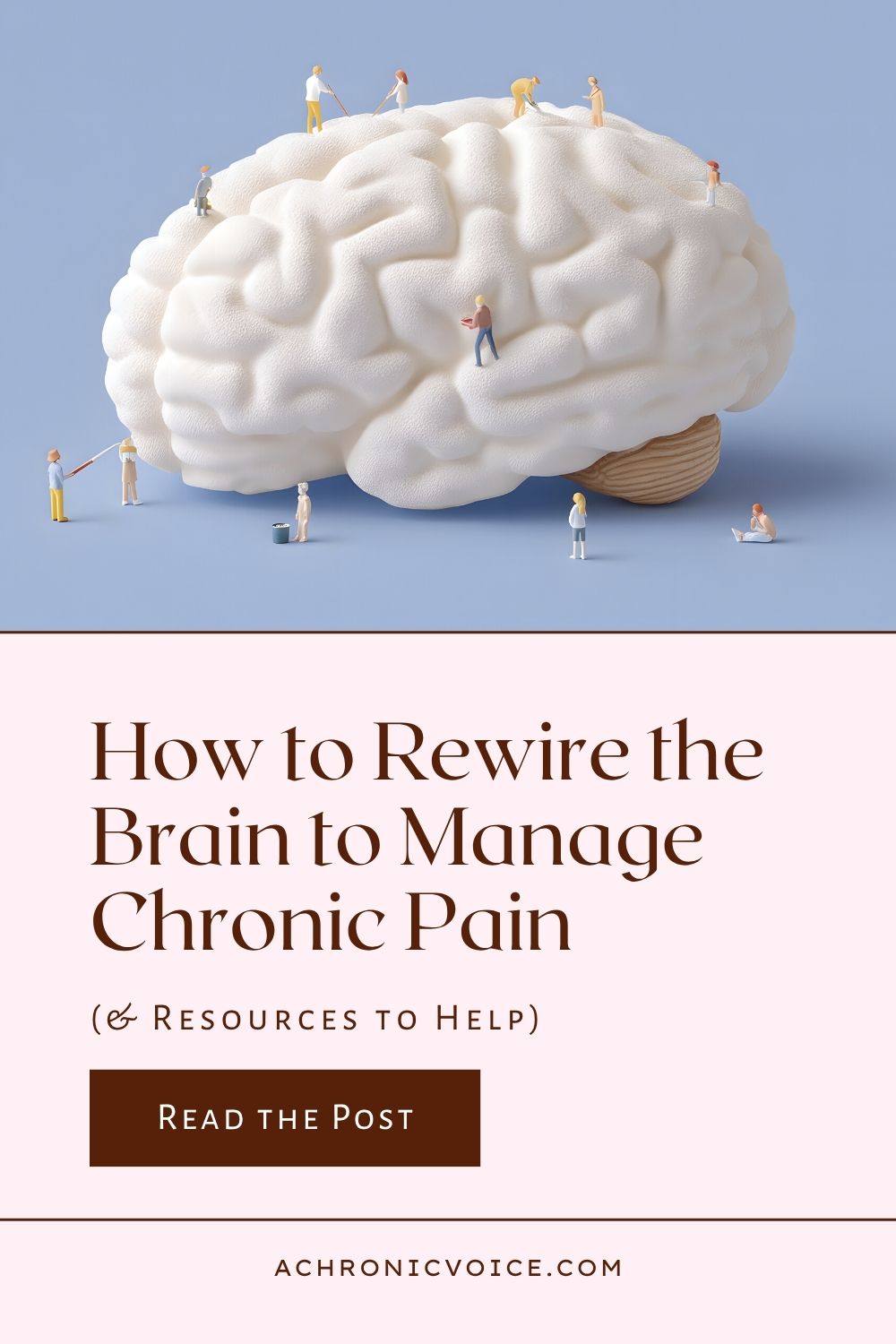
- Adluru, N., Korponay, C. H., Norton, D. L., Goldman, R. I., & Davidson, R. J. (2020). BrainAGE and regional volumetric analysis of a Buddhist monk: A longitudinal MRI case study. Neurocase, 26(2), 79–90. https://doi.org/10.1080/13554794.2020.1731553
- Allahverdi, E. (2020). Psychosomatic pain. In Effects of Stress on Human Health. IntechOpen. https://doi.org/10.5772/intechopen.91328
- Baron, M., & Devor, M. (2022). Might pain be experienced in the brainstem rather than in the cerebral cortex? Behavioural Brain Research, 427, 113861. https://doi.org/10.1016/j.bbr.2022.113861
- Brocchi, A., Rebelos, E., Dardano, A., Mantuano, M., & Daniele, G. (2022). Effects of intermittent fasting on brain metabolism. Nutrients, 14(6), 1275. https://doi.org/10.3390/nu14061275
- Carlbring, P. (2015, December 2). Neuroplasticity in response to cognitive behavior therapy for social anxiety disorder. Per Carlbring. https://www.carlbring.se/neuroplasticity_cognitive_-behavior-therapy-social-anxiety/
- Cheng, J.-K., & Ji, R.-R. (2008). Intracellular signaling in primary sensory neurons and persistent pain. Neurochemical Research, 33(10), 1970–1978. https://doi.org/10.1007/s11064-008-9711-z
- Cherry, K. (2024, May 17). How brain neurons change over time from life experience. Verywell Mind. https://www.verywellmind.com/what-is-brain-plasticity-2794886
- Cleveland Clinic. (2023, March 19). Grey matter. https://my.clevelandclinic.org/health/body/24831-grey-matter
- Cleveland Clinic. (2025, January 25). Brain. https://my.clevelandclinic.org/health/body/22638-brain
- Cromie, W. J. (2006, February 2). Meditation found to increase brain size. Harvard Gazette. https://news.harvard.edu/gazette/story/2006/02/meditation-found-to-increase-brain-size/
- Davidson, R. J., & McEwen, B. S. (2012). Social influences on neuroplasticity: Stress and interventions to promote well-being. Nature Neuroscience, 15(5), 689–695. https://doi.org/10.1038/nn.3093
- Dydyk, A. M., Chiebuka, E., Stretanski, M. F., & Givler, A. (2025). Central pain syndrome. In StatPearls. StatPearls Publishing. http://www.ncbi.nlm.nih.gov/books/NBK553027/
- El-Sayes, J., Harasym, D., Turco, C. V., Locke, M. B., & Nelson, A. J. (2019). Exercise-induced neuroplasticity: A mechanistic model and prospects for promoting plasticity. The Neuroscientist, 25(1), 65–85. https://doi.org/10.1177/1073858418771538
- Fang, J.-Q., & Shao, X.-M. (2017). [New trains of thoughts about acupuncture analgesia-acupuncture analgesia feb involve multi-dimensional regulation of pain]. Zhen Ci Yan Jiu = Acupuncture Research, 42(1), 85–89. https://doi.org/10.13702/j.1000-0607.2017.01.016
- Fisher, J. (2025, April 2). Tips to leverage neuroplasticity to maintain cognitive fitness as you age. Harvard Health. https://www.health.harvard.edu/mind-and-mood/tips-to-leverage-neuroplasticity-to-maintain-cognitive-fitness-as-you-age
- He, Y., & Kim, P. Y. (2023). Allodynia. In StatPearls. StatPearls Publishing. http://www.ncbi.nlm.nih.gov/books/NBK537129/
- Innocenti, G. M. (2022). Chapter 1—Defining neuroplasticity. In A. Quartarone, M. F. Ghilardi, & F. Boller (Eds.), Handbook of Clinical Neurology (Vol. 184, pp. 3–18). Elsevier. https://doi.org/10.1016/B978-0-12-819410-2.00001-1
- Johns Hopkins Medicine. (2025, April 4). Brain anatomy and how the brain works. https://www.hopkinsmedicine.org/health/conditions-and-diseases/anatomy-of-the-brain
- Kuner, R., & Kuner, T. (2021). Cellular circuits in the brain and their modulation in acute and chronic pain. Physiological Reviews, 101(1), 213–258. https://doi.org/10.1152/physrev.00040.2019
- Louw, A., Nijs, J., & Puentedura, E. J. (2017). A clinical perspective on a pain neuroscience education approach to manual therapy. Journal of Manual & Manipulative Therapy, 25(3), 160–168. https://doi.org/10.1080/10669817.2017.1323699
- Malcolm, L. (2015, April 21). Neuroplasticity: How the brain can heal itself. ABC Listen. https://www.abc.net.au/listen/programs/allinthemind/neuroplasticity-and-how-the-brain-can-heal-itself/6406736
- Maldonado, K. A., & Alsayouri, K. (2023). Physiology, brain. In StatPearls. StatPearls Publishing. http://www.ncbi.nlm.nih.gov/books/NBK551718/
- Mayo Clinic Press Editors. (2024, May 10). What is central sensitization and how does it relate to pain? https://mcpress.mayoclinic.org/living-well/what-is-central-sensitization-and-how-does-it-relate-to-pain/
- Mercadante, A. A., & Tadi, P. (2023). Neuroanatomy, gray matter. In StatPearls. StatPearls Publishing. http://www.ncbi.nlm.nih.gov/books/NBK553239/
- Moreno, J. J. (2024). Modulation of inflammatory response and pain by mind-body therapies as meditation. Brain Behavior and Immunity Integrative, 5, 100036. https://doi.org/10.1016/j.bbii.2023.100036
- National Institute of Neurological Disorders and Stroke. (2025, February 12). Pain. https://www.ninds.nih.gov/health-information/disorders/pain
- Orthopaedic Hand Service. (2023, January). Pain, allodynia, and desensitisation therapy: Information for patients. East Kent Hospitals University NHS Foundation Trust. https://leaflets.ekhuft.nhs.uk/s3/assets/easysite-leaflets/desensitising-january-2023.pdf
- Pate, J. (2023, April 16). Turning down the volume of pain – how to retrain your brain when you get sensitised. The Conversation. http://theconversation.com/turning-down-the-volume-of-pain-how-to-retrain-your-brain-when-you-get-sensitised-202850
- Pathways Pain Relief (Director). (2019, January 16). The pain that started Pathways: The pain relief app [Video]. https://www.youtube.com/watch?v=kMbko6lpGGk
- Phillips, C. (2017). Lifestyle modulators of neuroplasticity: How physical activity, mental engagement, and diet promote cognitive health during aging. Neural Plasticity, 2017(1), 3589271. https://doi.org/10.1155/2017/3589271
- Physiopedia. (n.d.). Neuroplasticity after stroke. Retrieved August 11, 2025, from https://www.physio-pedia.com/Neuroplasticity_After_Stroke
- Santana, M. V. D. O., Malheiros, K. D. P., Marchiori, C. H., & Melo, È. M. D. (2025). The role of music, dance, movement, and frequency in the process of neuroplasticity. Middle East Research Journal of Medical Sciences, 5(03), 342–359. https://doi.org/10.36348/merjms.2025.v05i03.010
- Sekhon, S. (2018, May 1). The most comprehensive online pain therapy program: Pathways. Pathways Health. https://www.pathways.health/blog/the-most-comprehensive-online-pain-therapy-program-pathways/
- Tang, R., Friston, K. J., & Tang, Y.-Y. (2020). Brief mindfulness meditation induces gray matter changes in a brain hub. Neural Plasticity, 2020(1), 8830005. https://doi.org/10.1155/2020/8830005
- TEDx Talks. (2012, January 24). How meditation can reshape our brains: Sara Lazar at TEDxCambridge [Video]. YouTube. https://www.youtube.com/watch?v=m8rRzTtP7Tc
- Volcheck, M. M., Graham, S. M., Fleming, K. C., Mohabbat, A. B., & Luedtke, C. A. (2023). Central sensitization, chronic pain, and other symptoms: Better understanding, better management. Cleveland Clinic Journal of Medicine, 90(4), 245–254. https://doi.org/10.3949/ccjm.90a.22019
- Wimberger, L. (n.d.). Lisa’s Story. Neurosculpting®. Retrieved July 30, 2019, from https://www.neurosculpting.com/lisa-wimberger-story/
- Zaatar, M. T., Alhakim, K., Enayeh, M., & Tamer, R. (2024). The transformative power of music: Insights into neuroplasticity, health, and disease. Brain, Behavior, & Immunity - Health, 35, 100716. https://doi.org/10.1016/j.bbih.2023.100716

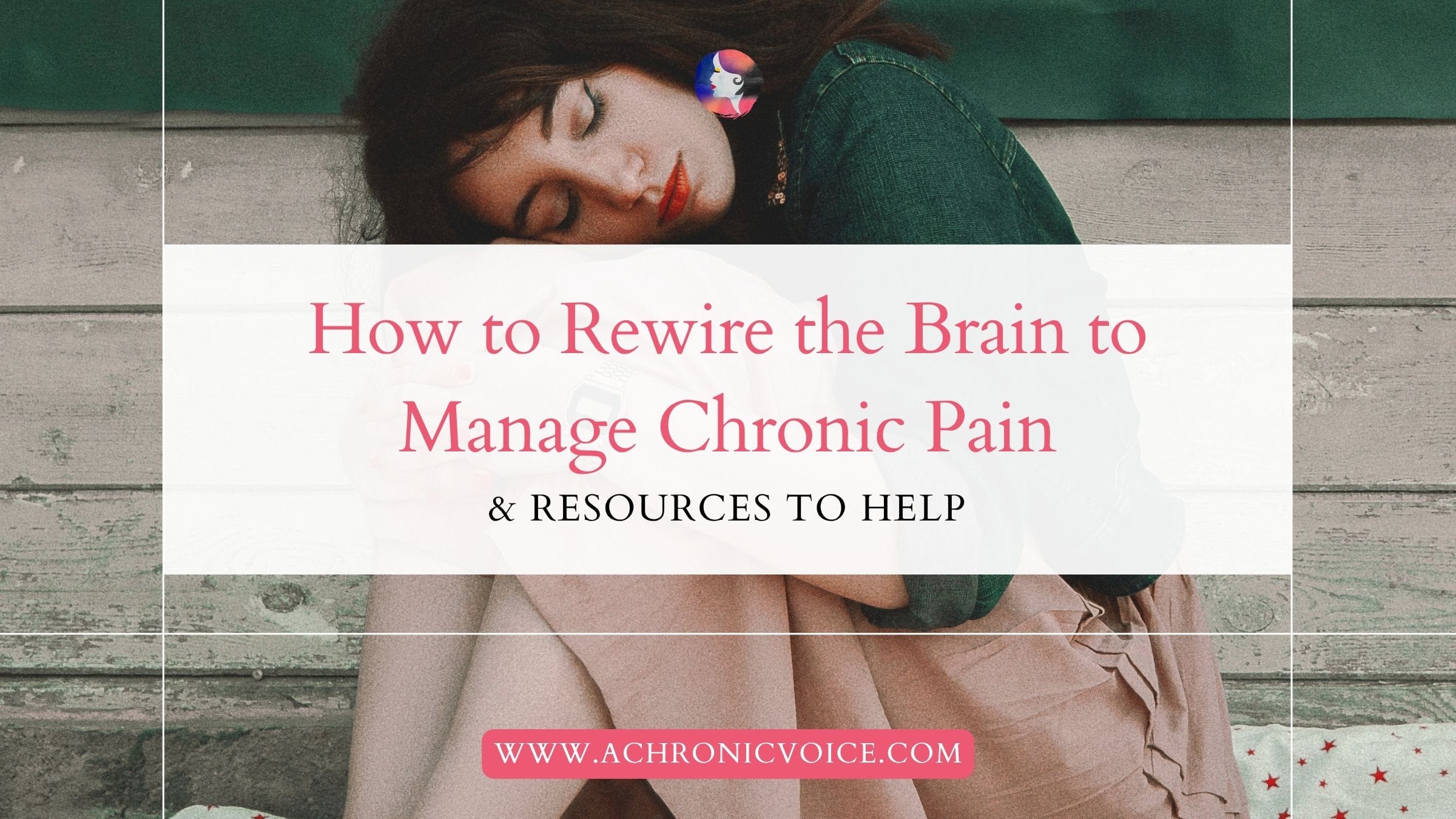

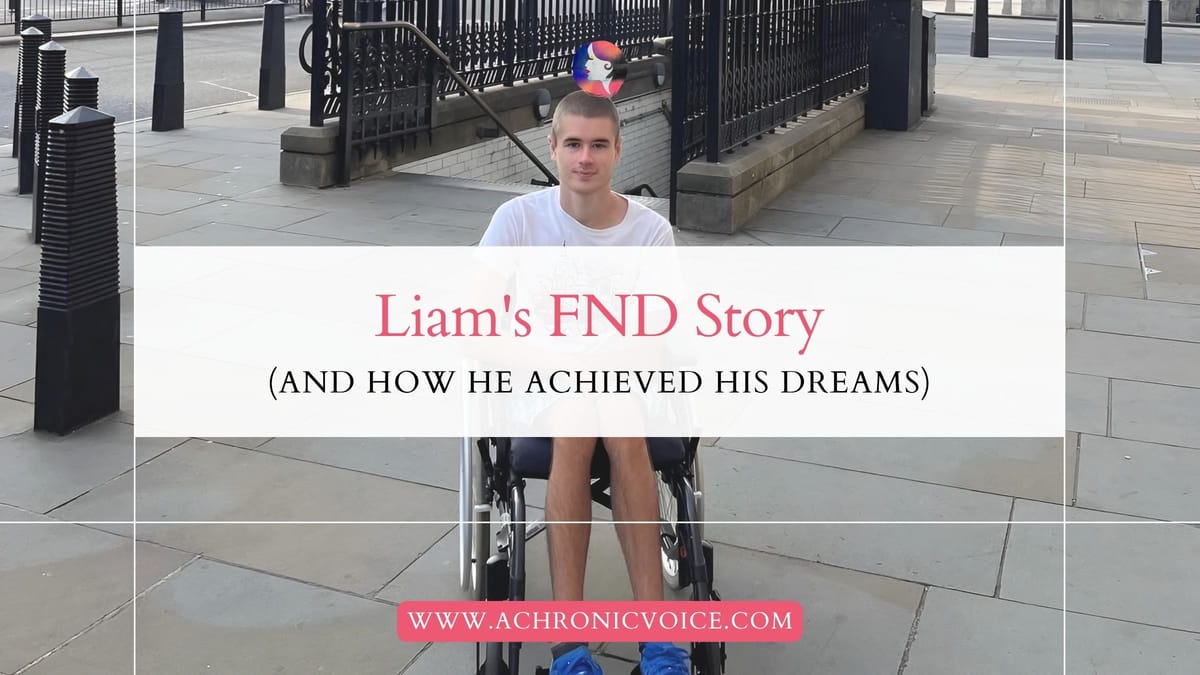
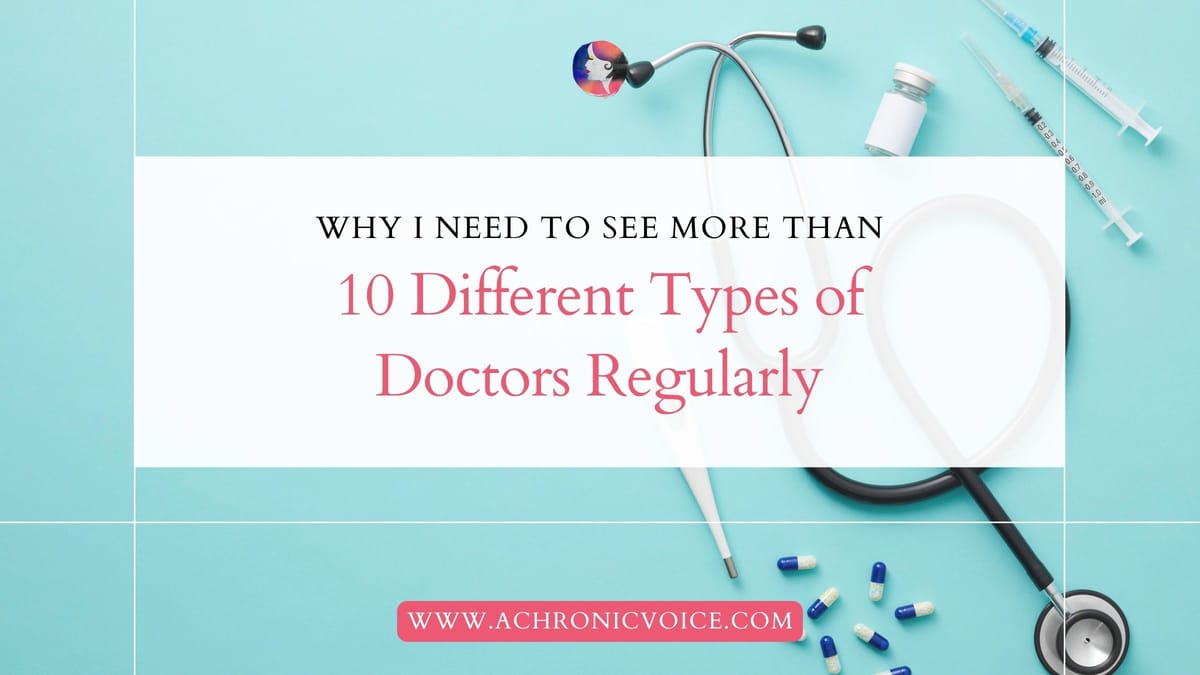
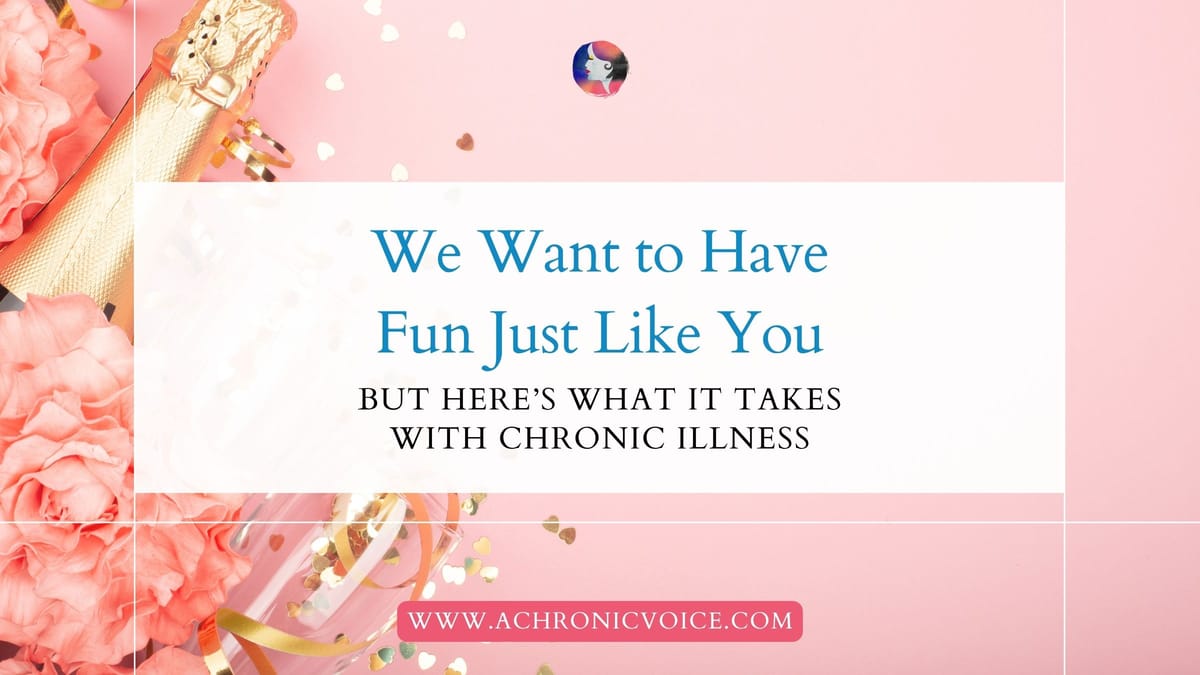
Comments Archives:
Comments imported from previous WordPress site.-
Lucy
-
Sheryl Chan
-
Heather @ Writer's Life for You
-
Sheryl Chan
-
Claire
-
Mardene Carr
-
Sheryl Chan
-
Liz Crusade
-
Sheryl Chan
-
Char | ChronicallyHopeful.com
-
Sheryl Chan
-
dSavannah
-
Sheryl Chan
-
Candice
-
Sheryl Chan
-
Pamela Jessen
-
Sheryl Chan
Start a new conversation in the Member Comments below!This is such a detailed post, thank you for all your research and efforts in putting it together. I incorporate neuroplasticity exercises and have found them beneficial but I never considered how other aspects of health like diet and human connection can enhance the benefits of them.
Thank you Lucy, for taking the time to read it! Yes I hope the research is as accurate as is possible on my end of things. Definitely – diet and social connection are SO important, too! I have an entire post about those too. Just do a search for ‘Dimensions of Wellness’ 😉 If it’s too long there’s audio too! 😀
Excellent in-depth post! I loved how you differentiated between chronic and acute pain. Neuroplasticity is such an interesting field and you did a great job explaining it. As someone with chronic pain from RA and Fibromyalgia, it’s nice to know there is hope. I’m going to look into mindfulness meditation as my psychologist just mentioned this too. I’m also hoping that some CBT will help too. I always love how informative your posts are. They’re super helpful and interesting.
Thank you so much for your kind words, Heather. I never knew you had RA and fibromyalgia. I hope this post helps a little and goodness knows I need to practice it more myself, too! 😉
As someone with fibromyalgia, so central sensitisation, I try and eat well and exercise (kind of failing at the sleep aspect . . . ) but I haven’t heard of neuro sculpting before. Thanks for sharing this, I will look into it further.
I cannot begin to imagine what it must be like for persons who suffer from chronic pain. I can well imagine that it must be tiring though. Sigh
Hi Mardene, it definitely isn’t easy one bit, but I think as human beings we learn to adapt in order to survive, and thrive with what we have where we are 🙂 Thank you for your empathy x
I know many that have cured their multiple chemical sensitivity with brain retraining. However, some of us won’t do the desensitization methods like sniffing Tide or Axe so wish you had a link to “There are medications and nerve treatments that work on our memories”. Lastly I had severe fibromyalgia and it went away when I cleaned my home of chemicals residue and someone I knew developed Parkinsons’ but was a big home use pesticide person. So neurotoxins like pesticides and perfumes are a factor especially if genes play a role and I want a balance between ‘head in the sand’ nothing can harm me and environmental health knowledge.
Hi Liz, thanks for your comment and feedback! I didn’t write anything about sniffing Tide or Axe, oh my, that doesn’t sound good! Cleaning your home of chemicals are definitely helpful, and also eating or using products that are ‘cleaner’ in and on our bodies. However, this post focuses on neuroplasticity, and not environment factors. That would be an entirely new topic on its own, which might be a good idea. Take care!
You’ve done lots of research for this, thank you for putting it together. I’m glad to have found the keto diet and various supplements as well as gentle movement to be best for my pain relief. Was on so much medication before that. Chronic pain is awful and there are so many types of pain too… Each requiring different treatments. Like my body needs heat for relief while my spine and head needs cold – sometimes simultaneously. So bizarre, isn’t it? Thanks again for all this great info x
Hi Char,
Thanks for taking the time to read and comment. Am glad you found that the keto diet worked for you! Yes I think it’s hard for people to understand that there are so many kinds of pains, with different approaches needed. It indeed is bizarre as it gets! x
I included a link to this blog post on my post about pain and the Pathways app on dSavannahRambles . Thank you for your thoughts!
Thank you so much! 😀
oh this post is amazing! I know several people that suffer from chronic pain and I am going to share your post with them!
Thank you Candice, your support means a great deal to me!
Such a welll done post!!! You’ve provided excellent information and resources for people with Chronic Pain…thank you so much for your thoughtfulness and care in presenting this.
Thanks Pamela! I hope it’s helpful and I learned a lot from researching this topic, too!